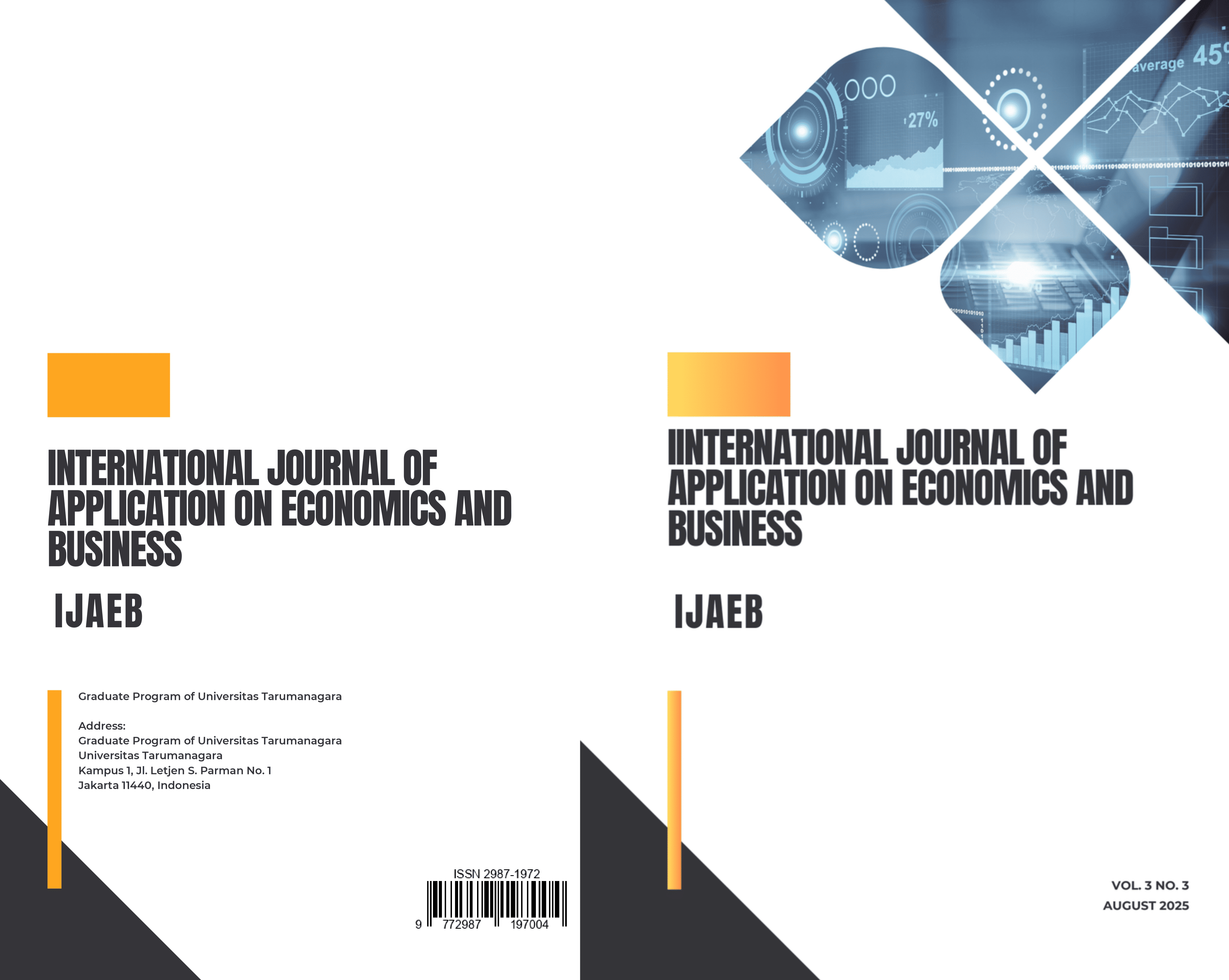THE EFFECT OF LIQUIDITY, SOLVENCY, ACTIVITY, AND PROFITABILITY ON FINANCIAL PERFORMANCE OF MANUFACTURING COMPANIES
Main Article Content
Abstract
Indonesia is a country with various economic and business activities. With the development of economic activities, companies that have similar sectors in Indonesia have emerged, creating competition between these companies. The development of the company itself can be assessed from the corporation’s financial performance, if the corporation has financial performance. Financial performance describes ability of a corporation to produces profits effectively and efficiently over a set period by leveraging its assets. This analysis aimed to examine the effect of liquidity, solvency, activity, and profitability on the financial performance of non-cyclical consumer sector companies listed on the Indonesia Stock Exchange (IDX) over period of 2021 to 2023. For this research, purposive sampling was used, resulting in the selection of 120 companies from the non-cyclical consumer sector registered in IDX. Data processing applied in this research was Eviews 12 software. Hypothesis testing method employed was multiple linear regression. The model estimation applied was the Fixed Effects Model (FEM) to ensure alignment with multiple linear regression in analyzing the data. This research utilizes Return on Assets (ROA) to assess the financial performance of company The results obtained in this research indicate that liquidity have significant positive effect on financial performance. Solvency have significant negative effect on financial performance. Activity do not have a negative dan insignificant effect on financial performance. Profitability have significant positive effect on financial performance.
Article Details

This work is licensed under a Creative Commons Attribution-NonCommercial-ShareAlike 4.0 International License.
This journal provides immediate open access to its content on the principle that making research freely available to the public supports a greater global exchange of knowledge.
IJAEB by Graduate Program of Universitas Tarumanagara is licensed under a Creative Commons Attribution-NonCommercial-ShareAlike 4.0 International License.. Permissions beyond the scope of this license may be available at https://journal.untar.ac.id/index.php/ijaeb
References
Jensen, M. C., & Mecking, W. (1976). Theory of the Firm: Managerial Behavior, Agency Costs and Ownership Structure. Journal of Finance Economic 3(4), 305-360.
Kariyoto. (2018). Manajemen Keuangan: Konsep dan Implementasi. Malang: UB Press.
Harahap. (2018). Analisis Kritis atas Laporan Keuangan. Jakarta: Rajawali Pers.
Kasmir. (2019). Analisis Laporan Keuangan. Depok: Rajawali Pers.
Sudarno, et al. (2022). Teori Penelitian Keuangan. Malang: Literasi Nusantara Abadi.
Clarissya & Dewi, S. P. (2024). Faktor-Faktor Yang Memengaruhi Kinerja Keuangan. Jurnal Multi paradigma Akuntansi. Vol. 6 No. 2.
Ningsih, A. M., Hardiwinoto, Ridwan, M., & Putri, A. P. R. Z. (2023). Analisis Rasio Likuiditas, Solvabilitas, Aktivitas, Dan Profitabilitas Untuk Menilai Kinerja Keuangan Pada Perusahaan Food And Beverage Yang Terdaftar Di Bursa Efek Indonesia Tahun 2019-2021. KOMPARTEMEN Jurnal Ilmiah Akuntansi. Vol. 21 No. 1.
Affi, F. & As’ari, H. (2023). Pengaruh Profitabilitas, Solvabilitas dan Likuiditas Terhadap Kinerja Keuangan Perusahaan. Jurnal Kewirausahaan, Akuntansi dan Manajemen Tri Bisnis. Vol. 5 No. 1.
Kertorahardjo, A. & Susanto, L. (2021). Faktor-Faktor Yang Berpengaruh Terhadap Kinerja Keuangan. Jurnal Paradigma Akuntansi. Vol. 3 No. 1.
Grediani, E., Saputri, E., & Hanifah (2022). Analisis Rasio Solvabilitas, Likuiditas, dan Aktivitas Terhadap Kinerja Keuangan Perusahaan di Sektor Perdagangan yang Terdaftar di BEI Periode 2026-2020. JIAK Jurnal Ilmu Akuntansi dan Keuangan. Vol. 11 No.1.
Atika, W. & Asih, D. N. L. (2024). Analisis Pengaruh Rasio Likuiditas, Solvabilitas dan Profitabilitas Terhadap Kinerja Keuangan Perusahaan Manufaktur (Studi Kasus Sub Sektor Makanan dan Minuman Yang Terdaftar Di BEI Periode 2019-2021). EKTASI Jurnal Ekonomi, Akuntansi, dan Organisasi. Vol. 2 No. 1.
Sugiyono. (2019). Metode Penelitian Kuantitatif, Kualitatif, dan R&D. Bandung: Alfabeta.
Ghozali, I. & Ratmono, D. (2017). Analisis Multivariat dan Ekonomika Teori, Konsep, dan Aplikasi dengan EViews 10. Semarang: Badan Penerbit Universitas Diponegoro.
Sugiyono. (2017). Metode Penelitian Kuantitatif, Kualitatif, dan R&D. Bandung: Alfabeta.



